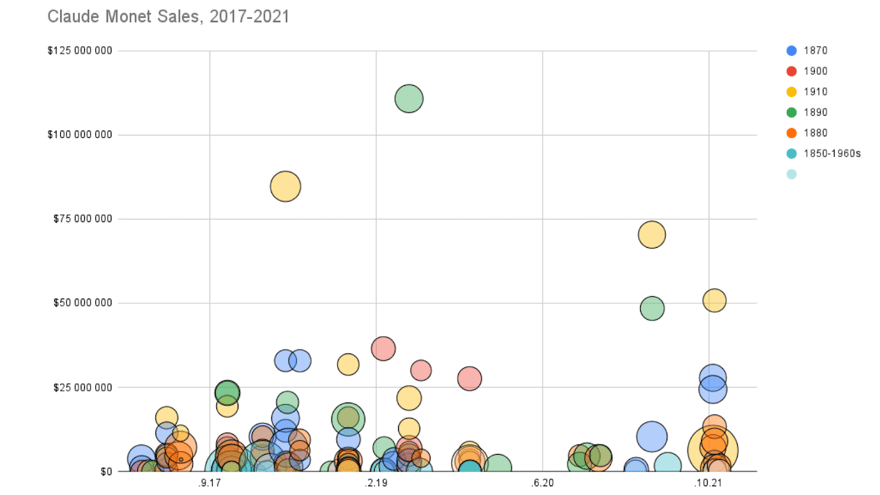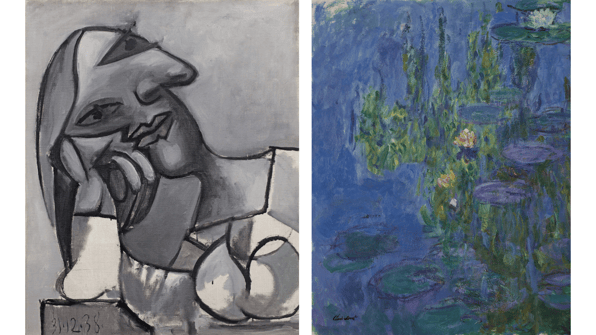The Monet Market Jumped During the Pandemic
With an aggregate low estimate of $70 million, this season's Monet works tell us more about the market pattern
This week in London nearly $70 million of Claude Monet’s art will be offered at Sotheby’s and Phillips with the overwhelming majority of the works appearing at the former house. It’s hardly uncommon for the influential Impressionist artist whose work prefigures Modern abstraction to be a mainstay of the auctions. In 2018, auction market volume for Monet peaked at $352 million in sales. The following year came close with another $296 million. After the auctions were occluded in 2020, demand for Monet came roaring back with another $274 million in sales last year. Over the last five years, more than $1.1 billion in Monet works traded hands publicly.
Although peak spending for Monet was weighted more toward the beginning of the half decade, three of the top five prices during the period have all appeared last year. The record price for a Monet of $110 million was set in 2019 (telegraphed a year earlier with the $84 million paid for a nymphéas work.) But since that time three other works have traded in the $48 million to $70 million range. It is these works that seem to indicate a new pricing scale in the Monet market rather than the peak prices from before the pandemic.
It is not uncommon for markets to rise in this fashion. A new record resets the upper bound of pricing which allows buyers to feel more comfortable spending at prices close to half the new high until enough confirming sales establish a matrix of prices for buyers to consider.
Whether these new prices are a product of the $110 million record or a consequence of the massive liquidity push initiated in response to the Covid pandemic is both difficult to determine and may also be irrelevant. The two dynamics may be reinforcing each other. We can focus on the market mechanism rather than the macroeconomics. The chart, above, shows the Monet works that have been sold at auction over the last five years.
One can see clearly that the volume of works has slowed dramatically even after the resumption of sales in mid-2020. The chart presents the sale date along the x-axis at the bottom and the price of the work along the y-axis to the left. Each sale is colored to show the rough decade in which the work was created. The size of the circle represents the hammer ratio. One can easily see that although the top prices are at higher hammer ratios than the middle band of works sold for approximately $25 million, none of the top works were sold for runaway prices.
In other words, the Monet market is—as one would expect—deeply researched and well-priced. That said, the notable feature of this chart is the way the tight group of works around the $25 million price point has spread out during the sales in 2021. What was once a no-man’s land from $40 million to $80 million has now become a sparsely populated. This might easily be accounted for by greater quality works coming to market. (There were a number of works sold in that price range before the period covered by the chart.) But that doesn’t seem to be the case here.
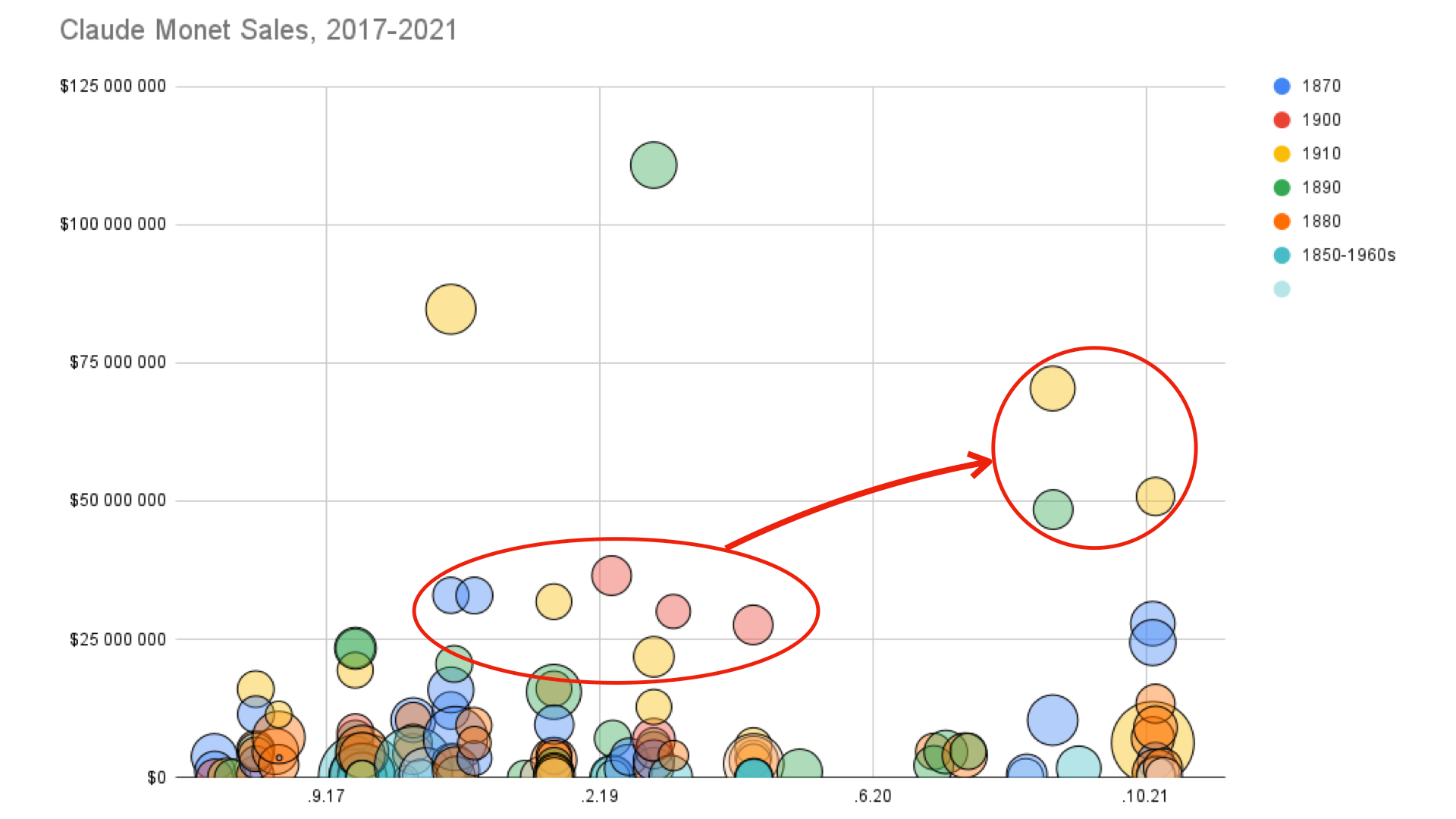
To prove that point, we are lucky to have two near-identical works sold just before and after the pandemic at vastly different prices. It would seem that these sales demonstrate the shift in pricing simply because they control a number of variables. Two works painted of nearly identical scenes from the same year on canvases of the same size sold two and a half years apart. The first Coin du bassin aux nymphéas sold in 2019 for $21.8 milllion. The second sold in November of 2021 for $50.8 million.
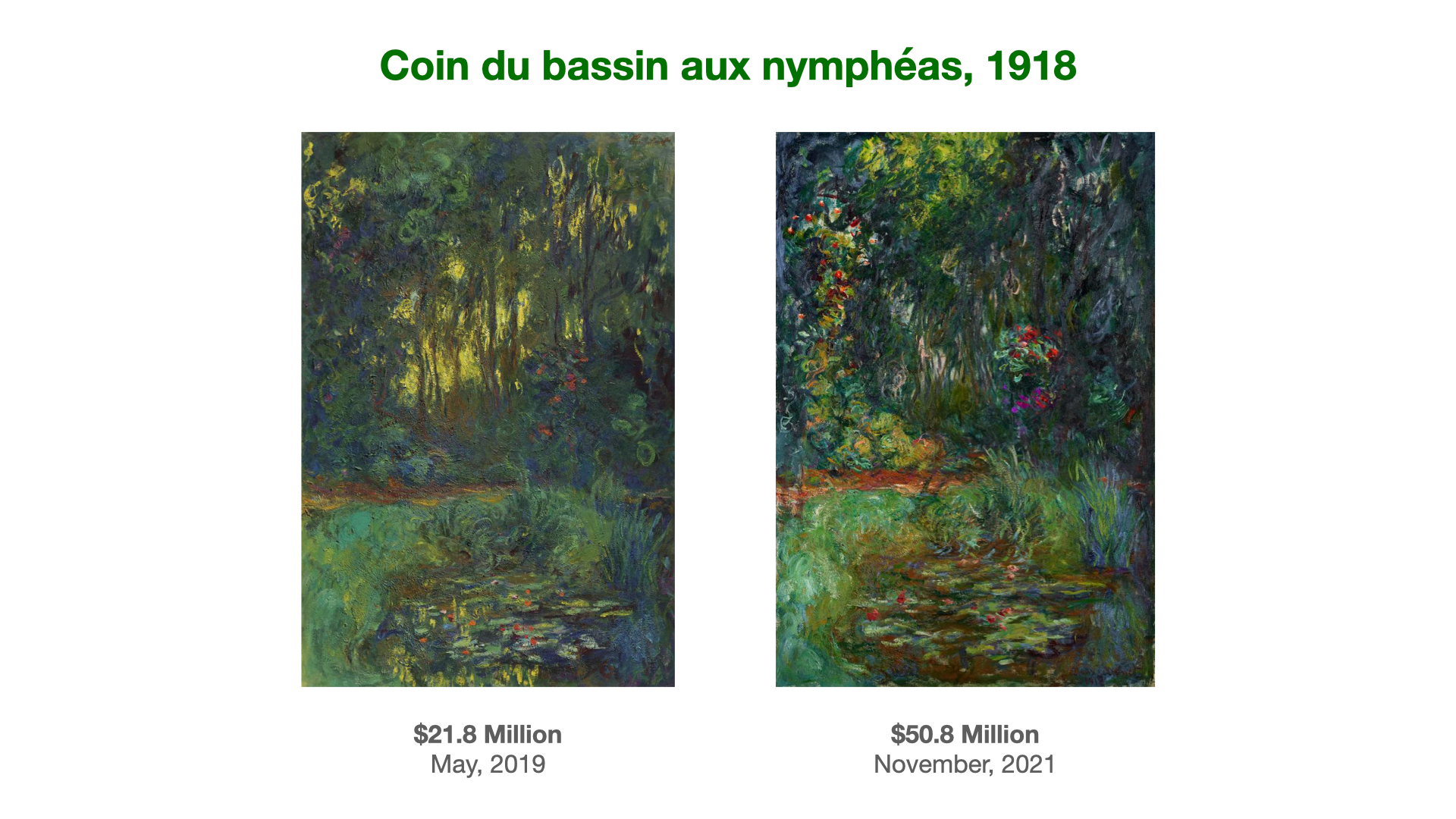
No one would or could argue that the works are the same or ought to have achieved the same price. Nonetheless, it would be hard to account for a $29 million price differential that did not include some sense that the economic environment surrounding the two sales had changed in some significant way. The market dynamics for Monet are clearly moving upwards helped along by global liquidity.
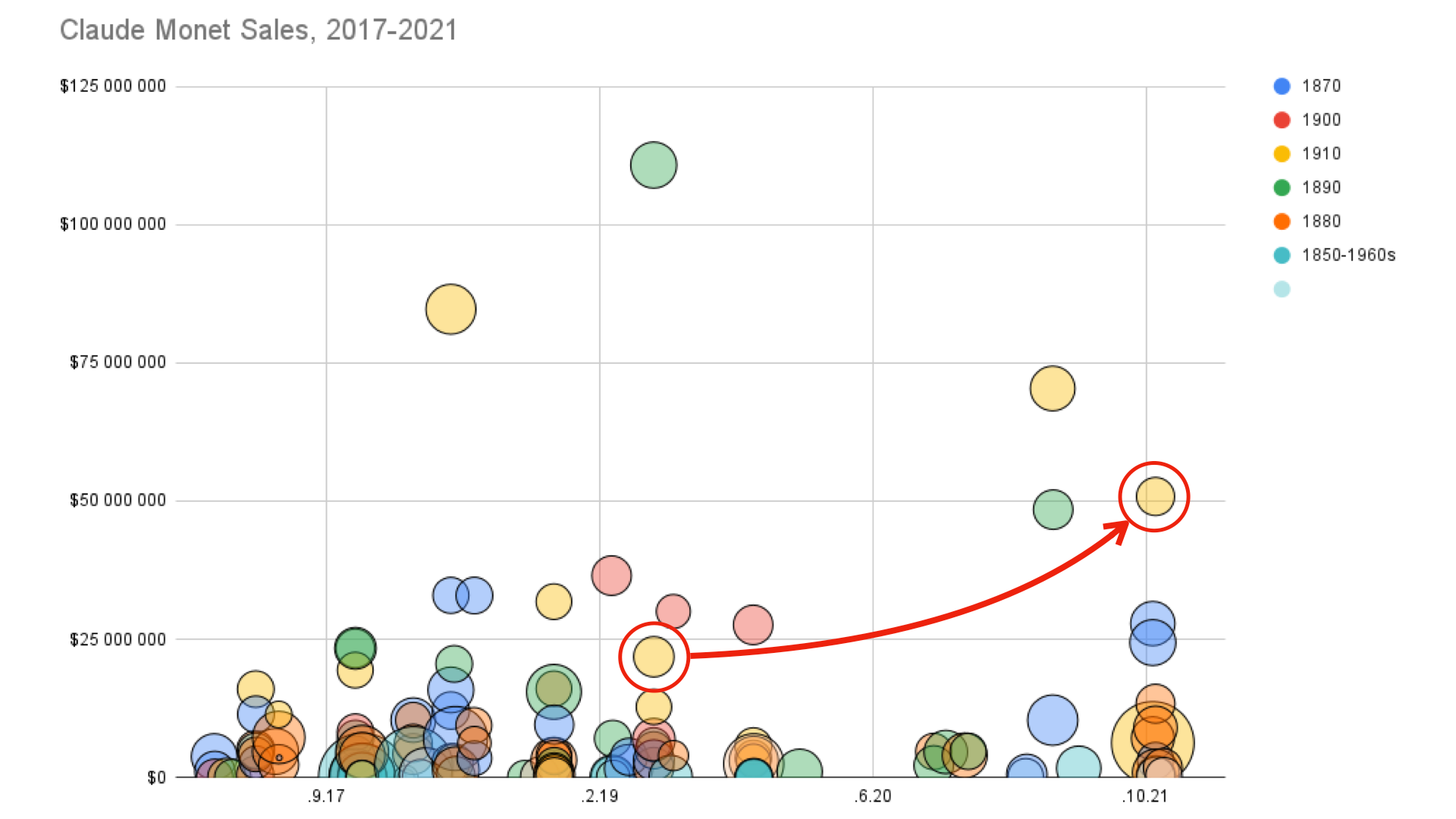
The remaining question is whether Sotheby’s estimates have truly taken this market shift into account or if the geo-political disruption of the Russian invasion of Ukraine will have a chilling effect on the market.
